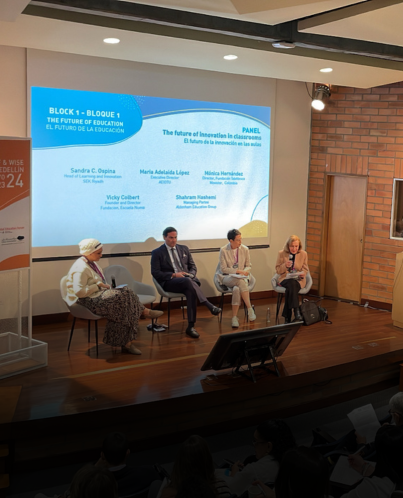How Students’ Surroundings Can Affect Their Learning
We often think of learning as a process that takes place entirely in our own heads. However, research has shown that a child’s learning can be significantly impacted by their physical surroundings – this includes both their home environment and the classroom. Learning is a continuous process, after all, and a healthy learning environment can make education more effortless and more accessible.
The environment’s impact
A child’s learning can be affected by a variety of factors. For example, a noisy or chaotic learning environment can make it difficult for them to concentrate on their studies. At home, for example, if they don’t have a designated space in which to study or do their homework, then they’ll find themselves struggling to focus. On the other hand, a well-lit, quiet and organised area can make it easier for them to concentrate, learn, and retain information. This is just as true in the classroom as it is at home. Students need to be able to focus on their work during lessons, and a well-designed and well-maintained classroom can help to promote a more positive learning environment, and leave students feeling more engaged and more focused.
It’s also worth noting that a student’s learning environment isn’t just the physical space around them. It can also include their cultural and social environment – if a child is from a background that’s different to the school’s dominant culture, then they may end up feeling excluded or marginalised. This can, in turn, impact their ability to learn. At Aldenham Education Group, we have schools in the UK and around the world – we opened our latest school, Aldenham Prep Riyadh, in Saudi Arabia in 2022. Our international network of schools are integrated closely, to promote links and cooperation across cultures and countries. At the same time, the Aldenham Prep Riyadh curriculum has been carefully tailored to fit with the local culture and traditions – subjects such as Arabic and Islamic Studies ensure that we’re offering our students the best all-round education.
What schools can do
Over the years, many studies have shown the importance of surroundings when it comes to learning, and shown a strong correlation between classroom environmental changes and academic success. In 2015, the University of Salford published a study looking at the impact of different classroom designs. The researchers studied 153 different classrooms in 27 diverse primary schools, looking at everything from air quality to the colours of rooms. They found that a ‘well-designed’ classroom could boost learning significantly – differences in classroom surroundings were responsible for 16% of the variation in students’ learning progress. Even lighting can affect how well students are learning – a study published earlier this year showed that low levels of lighting could improve students’ neurophysiological activity, as well as their memory skills.
One way in which schools can offer their students the support they need is by providing them with adaptive learning spaces. These spaces – which can be found throughout schools – are more flexible than the more rigid learning environment in traditional classrooms – allow students to be more comfortable and engage more with their learning. From comfortable chairs and beanbags for them to read, or desks and nooks where they can be more creative and hands-on, these spaces can give students more freedom to choose how they learn. After all, every student learns differently, and they need different surroundings in which to do so. While some are visual learners who can benefit from seeing their teacher in front of the whiteboard, others benefit more from hands-on learning, or others may learn better from sitting with a book in a quiet reading space.
Aldenham’s learning spaces
At all of our schools, we’ve worked to ensure that our students have the surroundings they need to get the most out of their time with us. For example, we’ve worked closely with the team of educational specialists at KidzInk Design. They’ve created educational spaces for schools around the world, and we partnered with them when designing Aldenham Prep Riyadh. As well as creating classrooms that can accommodate every student’s unique pace and style, they designed other facilities – including our canteen, a Wellbeing Room, and a Learning Resource Centre – that all support our students’ learning needs. The central atrium of the school, for example, offers a range of learning environments and spaces for students to play and learn, including bookshelves and a play area.
While Aldenham in the UK has existed on the same site since it was founded in 1597, delivering 425 years of academic excellence, we’re always looking to the future. We’re constantly updating our facilities in order to engage our students and improve their performance. Our sports facilities, for example, include a full-size sports hall and a dance studio, while the purpose-built theatre is well-equipped with state-of-the-art lighting and sound technology. It’s not just the school buildings that can stimulate and engage our students, though. Engaging and connecting with nature can make children more motivated to learn, and our UK schools are surrounded by acres of countryside. Although just 13 miles away from London, it’s set in over 110 acres of Hertfordshire countryside, giving our students the space to play, take part in sports, or just relax.
A child’s surroundings can have a significant impact on their learning. While a supportive, well-designed and positive environment can promote better mental health and increase a child’s ability to learn, a more chaotic learning environment can be a major barrier to their success. As educators, it is important to consider the space in which a child is learning and take steps to ensure it’s conducive to their success, which is what we aim to do at every one of our Aldenham schools. From flexible classrooms to comfortable spaces, we ensure they have everything they need – find out more about Aldenham’s facilities here.


